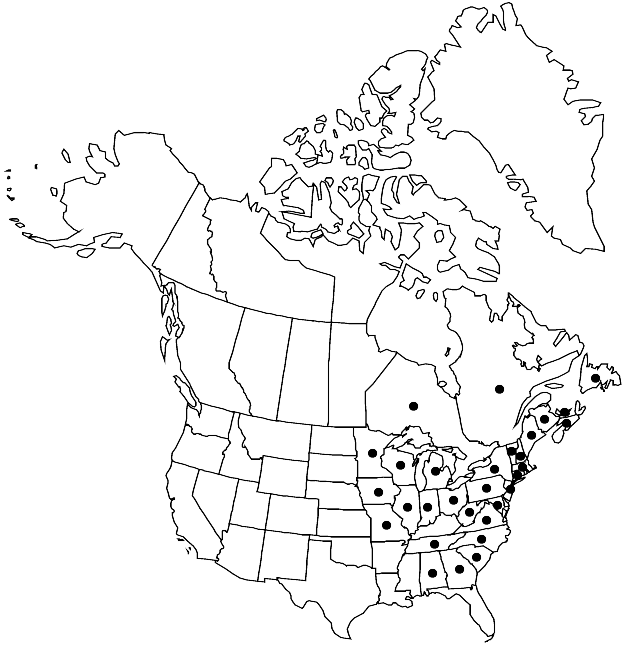Brotherella recurvans
Nova Guinea 12: 120. 1914.
Plants medium-sized, in dense mats, pale green to yellow-green. Stems 2–6 cm, 1.5–2 mm wide across main leafy shoot, markedly complanate-foliate, subpinnate to irregularly branched, strongly falcate-secund toward substrate at stem and branch apices; pseudoparaphyllia narrowly to lanceolate-filamentous. Leaves falcate-secund, ovate, tapering to apex, 1–1.5 mm; margins toothed in acumen; alar cells 3 or 4, yellowish. Sexual condition dioicous. Seta light-brown, 1–1.5 cm. Capsule inclined, oblong-cylindric, somewhat asymmetric; operculum short-rostrate.
Phenology: Capsules mature late fall.
Habitat: Logs, humus, tree trunks, rock, forests
Elevation: low to high elevations
Distribution

N.B., Nfld. and Labr. (Nfld.), N.S., Ont., P.E.I., Que., Ala., Conn., Ga., Ill., Ind., Iowa, Maine, Md., Mass., Mich., Minn., Mo., N.H., N.J., N.Y., N.C., Ohio, Pa., S.C., Tenn., Vt., Va., W.Va., Wis.
Discussion
Brotherella recurvans resembles Pseudotaxiphyllum elegans (Hypnaceae) superficially, but is generally larger and has inflated alar cells and a toothed apiculus. Branches and main shoots of B. recurvans bear leaves of similar size and areolation, and branching tends to be irregular. The laminal cells are usually linear to sinuate-linear.
Selected References
None.